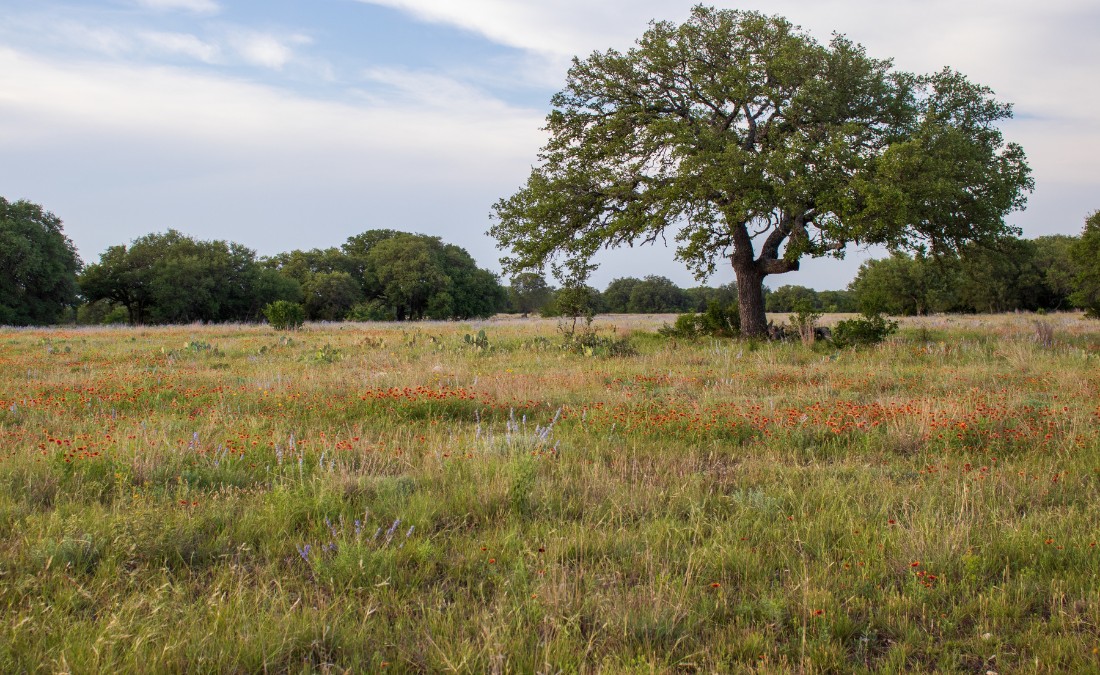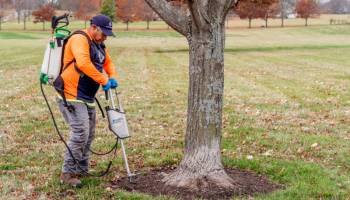From Leaf Spots to Dead Branches: Diagnosing Tree Diseases in Wichita
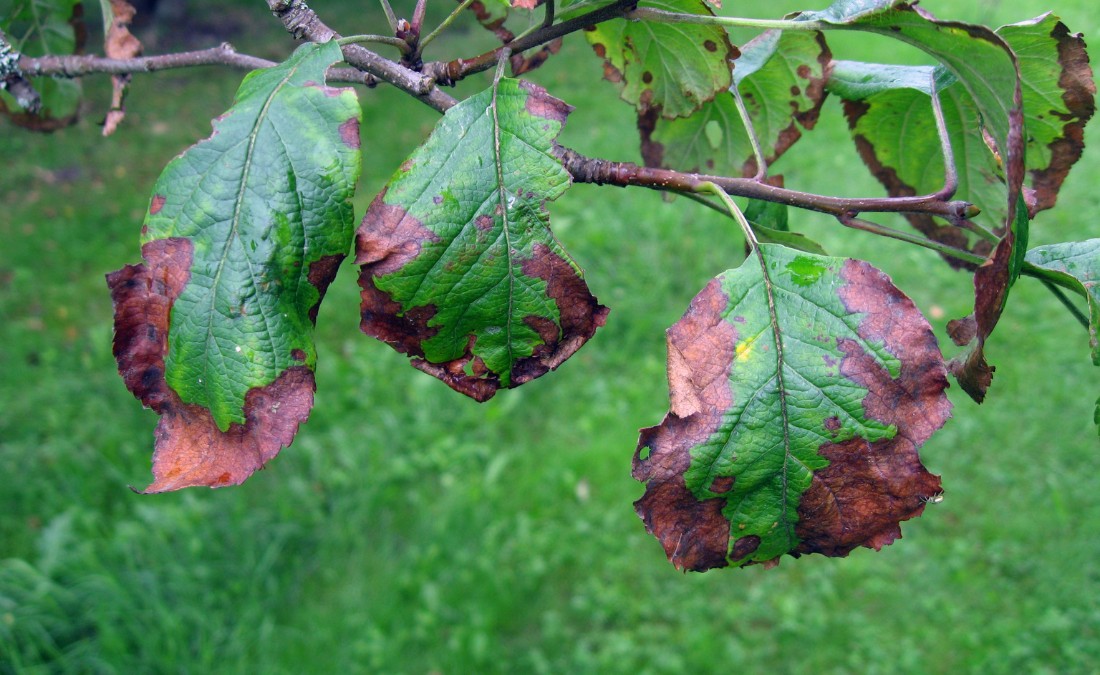
When you notice discolored leaves or dead branches, it could be a sign of a tree disease. Learn more about these common symptoms and what they might mean.
When you look at your trees in the summer and notice they don’t look quite right, you’ll likely have a lot of thoughts go through your head about what is wrong with them. Could it be a tree disease, a pest, or maybe even drought? Learn more about diagnosing the problems with your trees and what dead branches or damaged leaves might mean.
Key Takeaways
- Leaf spots and damage are common symptoms of diseases like fire blight, anthracnose, and cedar apple rust, though they can also indicate insect feeding or pollution stress.
- Powdery white mildew and black sooty mold on trees signal fungal infections that can limit photosynthesis and damage leaves, often requiring improved air circulation and pest control.
- Early leaf drop may indicate diseases like anthracnose or cedar apple rust, but it can also result from watering issues, making professional diagnosis essential.
- Dying branches often signal serious diseases such as oak wilt, Verticillium wilt, or root rot that can kill trees quickly without prompt treatment.
- Stunted growth (less than 12-24 inches annually) can result from various diseases, including Verticillium wilt and root rot, or non-disease factors like a nutrient deficiency and drought stress.
Common Tree Disease Symptoms to Watch For
Spotting tree diseases early can save your trees. Here are common symptoms in Wichita that signal it’s time to call a professional.
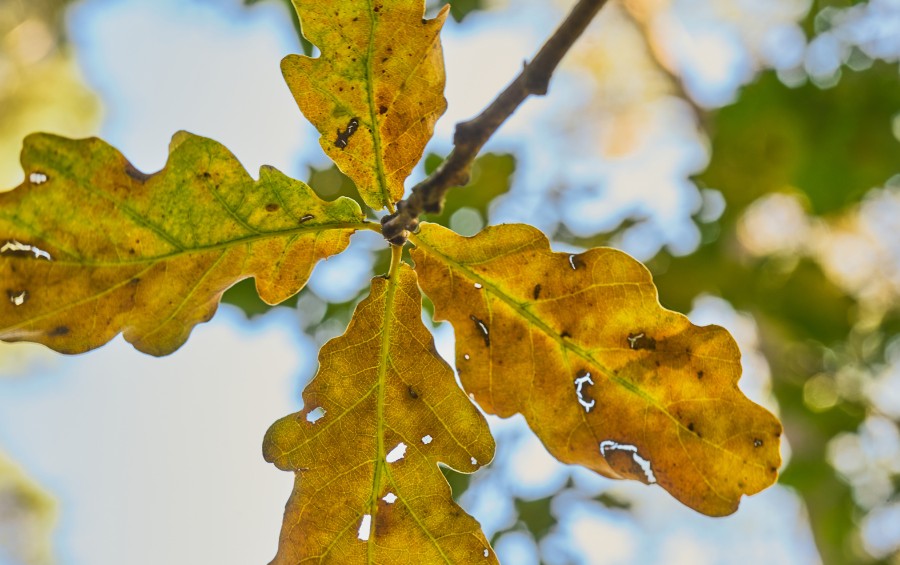
Leaf Spots and Discoloration
In normal circumstances in the summer, your leaves should be green and healthy-looking. When you notice odd spots or damage to your leaves, it’s a cause for concern.
Leaf spots are a common symptom of several tree diseases in the Wichita area. This makes it difficult for anyone who isn’t an arborist to diagnose the problem and suggest solutions to save your trees. Some of the diseases that may cause leaf spots or damage include:
Spots or damage on your leaves do not always mean your tree is dealing with a disease. It could also point to problems like insects feeding on the leaves or pollution stressing the tree.
White Powder or Black Mold
It’s never ideal when you see powder or mold develop on your trees, and it often points to a few different disease issues.
Powdery mildew will appear like a white powder on the leaves and stems and is usually on newer growth. While powdery mildew isn’t life-threatening to a tree, it will damage the leaves and leave them discolored and distorted. You can prevent powdery mildew by planting a tree where it will get plenty of sunlight and proper air circulation.
Black sooty mold is a fungal disease that develops when trees have honeydew (a sweet extract from pests like aphids or scale insects) on them. The mold doesn’t directly harm your trees, but it limits the leaves’ ability to perform photosynthesis. Prevention is often about reducing the presence of aphids and scale in your trees.
Premature Leaf Drop
Dropping leaves can indicate a disease problem with your Wichita trees. The most common diseases that premature leaf drop can indicate are anthracnose or cedar apple rust, though you’ll need a more rigorous diagnosis from a Certified Arborist first.
Early leaf drop is not only a disease indicator, but it can also demonstrate that your tree is dealing with too little or too much water. The variety of causes for premature leaf drop makes professional help all the more necessary, so you can take the proper actions to keep your tree alive.
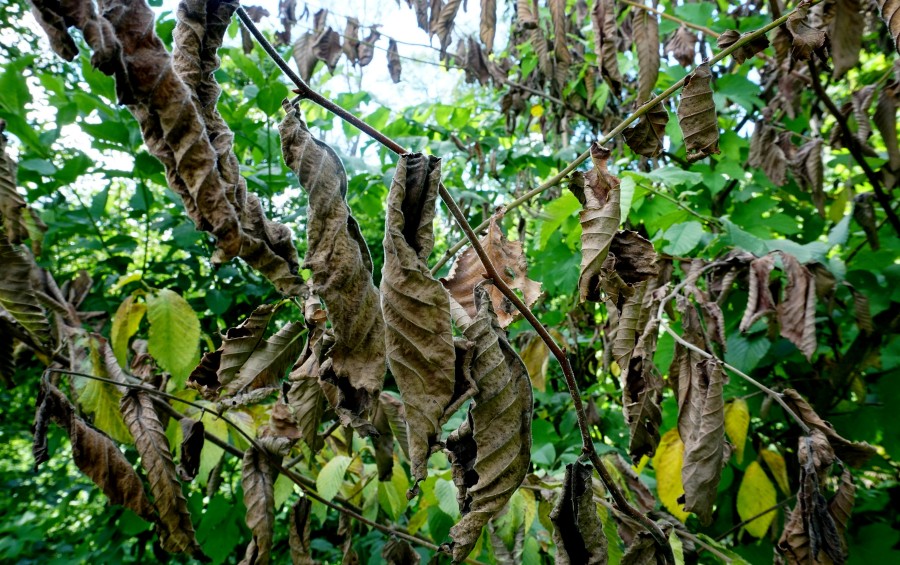
Dead or Dying Branches
Dying branches are often a sign of disease or stress for your tree. Some reasons for dead branches in the canopy include:
- Branch dieback can occur from diseases like oak wilt or Verticillium wilt. Both of these diseases can kill infected trees quickly.
- Root rot diseases, like armillaria root rot, are fungal diseases that destroy roots. Without enough roots, your trees will struggle to support their growth, and branches and sections of the tree may end up dead.
- Foliar diseases like anthracnose or needlecasts in evergreen trees can kill leaves and cause branch dieback when the infection is severe.
Stunted or Slow Growth
During normal conditions, many trees should typically grow about 12 to 24 inches a year, though some slow-growing species never reach 12 inches of yearly growth. However, if your tree is not growing and it appears like its development has been stagnant, it could be a sign that your tree is sick.
Stunted growth can occur from numerous disease infections, many of which an arborist can treat. Some diseases that can cause stunted growth include Verticillium wilt, root rot, and powdery mildew.
Stunted growth can also occur due to other factors that are unrelated to disease, such as nutrient deficiency or heat and drought stress during a Wichita heatwave.
Why Only a Certified Arborist Can Properly Diagnose Sick Trees
When your trees show symptoms, you need answers – not guesswork. The same brown spots on leaves could indicate different problems, each requiring a completely different treatment approach. Choose the wrong one, and you might watch your tree decline despite your best efforts.
That’s why you need a Certified Arborist who can provide:
- Accurate identification of the specific disease or stress factor
- Targeted treatment plans that address root causes, not just symptoms
- Early intervention that often prevents tree removal
- Peace of mind knowing you’re providing your tree with the best possible care
Frequently Asked Questions About Tree Diseases and Symptoms in Wichita
We understand that seeing something wrong with your trees can be a cause for concern for homeowners. To help you better understand your trees, we’ve answered some of the common questions we get from Wichita residents about them and the diseases they face.
What are some of the common diseases in Wichita?
Some of the common diseases we face in Wichita include:
- Anthracnose
- Dutch elm disease
- Powdery mildew
- Cedar apple rust
- Fire blight
- Verticillium wilt
There are also emerging diseases that could potentially become problems in our area, like thousand cankers disease of black walnuts and oak wilt.
How can I tell if my tree has a disease or some other problem?
Disease infections often look similar to other problems for your trees, as we hope this article has illustrated. Determining the exact cause of what is wrong with your trees will typically take the experience of a trained arborist. Have one of the professional arborists from Arbor Masters inspect your trees when they show symptoms to determine precisely what is wrong with them.
Is it possible to save a tree that is sick, or do I have to remove it?
Whether or not you can save your tree will depend on several factors, including:
- Severity of the infection
- Mortality of the disease
- Condition of the tree before the infection
- When you catch the disease
As soon as you notice any potential disease symptoms, have an arborist from Arbor Masters diagnose your tree and provide you with a prognosis on its condition and the chance of surviving the infection. In many cases, you can save the tree with fast action.
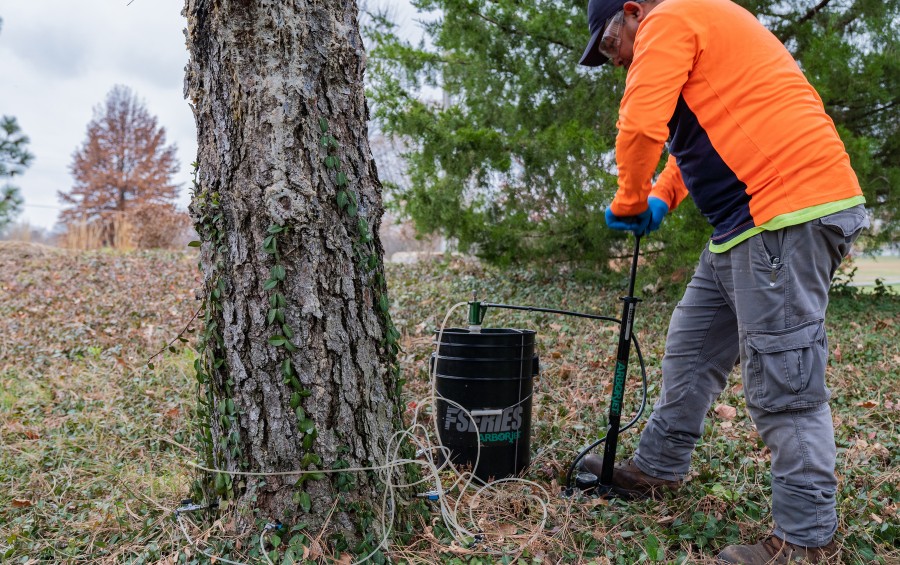
Protect Your Trees with Professional Diagnosis from Arbor Masters
When your tree shows signs like discolored leaves, mold development, or dead branches, it could be a sign of a tree disease. Fast action may be the difference between removing a tree and keeping it standing for decades. When you want to get the best care possible, trust the experienced team at Arbor Masters of Wichita.
Our arborists can examine your trees, diagnose what’s wrong with them, and provide treatment to save them. Call us today at 316-838-3111 or request a quote online for tree disease treatment today.

Get the latest local news, tree care tips, special offers, and company updates directly to your inbox! It's easy to subscribe and there's no spam - we promise.
"*" indicates required fields

